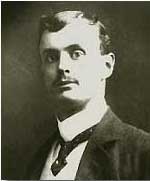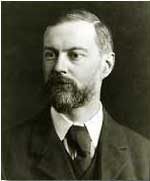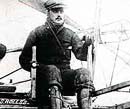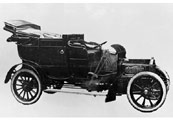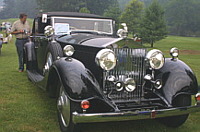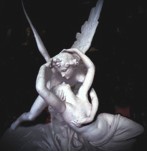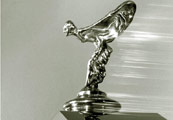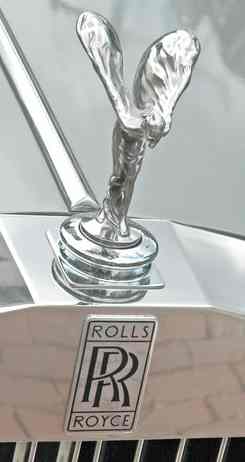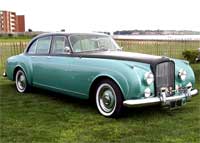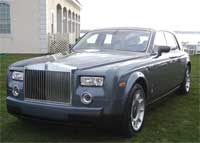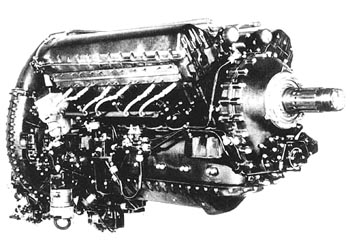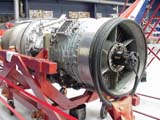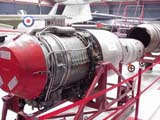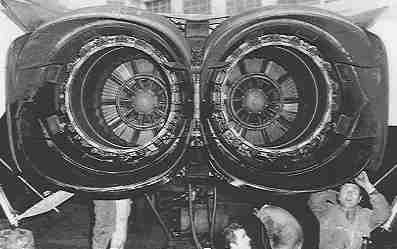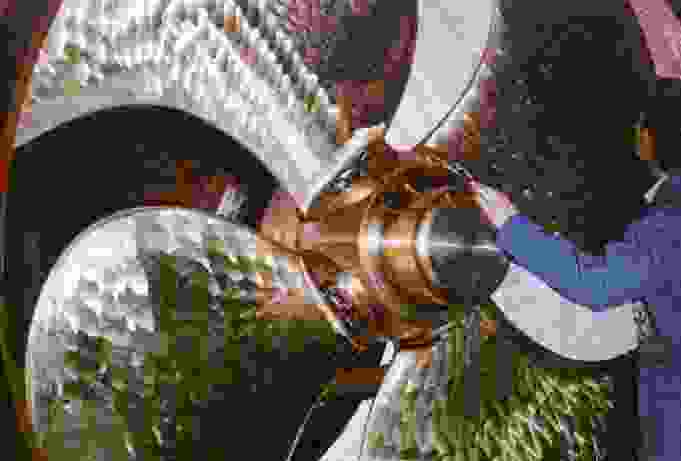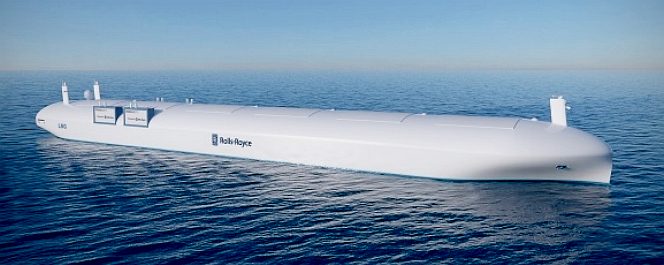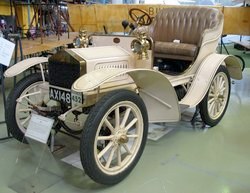|
ROLLS ROYCE
AUTOMOTIVE A TO Z CLIMATE CHANGE EVENTS FUEL CELLS HYDROGEN SITE INDEX UTILITIES
|
|||||||||||||||||||||||||||||||||||||||||||||||||||||||||||||||||||||||||||||||||||||||||||||||||||||||||||||||
|
Rolls-Royce grew from the electrical and mechanical business established by Henry Royce in 1884. Royce built his first motor car in 1904. He was introduced to Charles Stewart Rolls in a Manchester hotel on the May 4 1904 when the pair agreed a deal where Royce would manufacture cars, to be sold exclusively by Rolls. Rolls was already selling quality cars.
Agreement was reached that Royce Limited would manufacture a
range of cars to be exclusively sold by
Charles Rolls and Henry Royce
In 1910, Rolls made the world's first there-and-back flight across the Channel, without landing, a monumental feat in its day. He took off from Swingate near the Duke of Yorks school, and just over an hour later he landed back in Dover after circling French soil by air. He was given a hero's welcome when he landed, as he had become a true aviation pioneer.
Rolls-Royce is a set of several companies, all deriving from the automobile and aero-engine company founded by Henry Royce and Charles S. Rolls in 1906. Rolls Royce plc, by far the most significant in economic terms, is a British engineering firm these days specializing in turbine-based products, particularly aero engines, but providing a wide range of civil and military engineering products and services. Official site: http://www.rolls-royce.com/
Charles Rolls
Rolls-Royce Motor Cars made its debut at the 1904 Paris Motor Show, displaying two-, three- and four-cylinder cars, delivering 10hp, 15hp and 20hp respectively. An advert was placed in The Autocar magazine for "the first simple, silent Rolls-Royce", and with the launch of the six-cylinder, 30hp model (6177cc, 55mph) success was immediate. Rolls began to race a "Twenty" four-cylinder car - with its 4118cc 20hp engine delivering up to 52mph - and won the 1906 Isle of Man Tourist Trophy in a "Light Twenty" shorter-wheelbase model.
Rolls Royce 15 hp
Royce understood the importance of motorsport in promoting the brand, and also the role of publicity stunts; he and Claude Johnson, now Managing Director of Rolls-Royce Ltd., came up with ideas including a drive from Monte Carlo to London (which took 37 hours, 30 minutes). Although a new V8-engined model known as the Legalimit failed to take off, the six-cylinder, 7036cc 40/50 (48bhp) was instantly popular, liked for its smoothness, refinement, flexibility and reliability.
It
was the Silver Ghost that in 1907 caused the motoring press to
name Rolls-Royce the best car in the world. The characteristics of the
Silver Ghost were silence, smoothness and power. Only 7876 cars
were built over a period of 19 years - by comparison Henry Ford in
a similar period made over 15 million Model 'T' s.
Rolls Royce Phantom III - 1936
The Silver Ghost, now with a 7428cc engine, then saw off a challenge from Napier in 1911, averaging 24.3mpg on a run between London and Edinburgh and a top speed of 78.2mph at Brooklands - the Napier managed 19.3mpg and 76.4mph. A Ghost fitted with a single-seater body managed 101.8mph at Brooklands later in the year, and specially-prepared cars took part in the Alpine Trials and then the Spanish Grand Prix of 1913, when the Marquis de Salamanca won the event (thanks to Rolls-Royce test driver Eric Platford, leading the race, pulling over to let the important client take the glory). Sales were strong, and Royce built a new factory in Derby to cope with the growing demand for his cars. A Rolls-Royce service and repair centre was opened in Cricklewood, London, and driving schools were opened to instruct owners and chauffeurs on the best techniques.
The famous mascot was created in 1911 when artist Charles Sykes was commissioned to illustrate the year's sales catalogue. Sykes drew a girl with arms outstretched, holding her flowing gown, and the figurine became known as 'The Spirit of Ecstasy', although she was originally called 'The Spirit of Speed' and also known as 'The Flying Lady' or 'The Silver Lady'.
The Spirit of Ecstasy is one of the most well known motor car mascot in the world. Designed by Charles Robinson Sykes, The Spirit of Ecstasy has adorned the radiators of Rolls-Royce motor cars since 1911. This wonderful mascot was modeled after a young woman who had bewitching beauty, intellect and esprit - but not the social status which might have permitted her to marry the man with whom she had fallen in love.
Inspiration
Lord Montagu had made the decision to put a mascot on top of the radiator, and it had become a fashion. Rolls-Royce had noted other owners of their cars following the new vogue, but doing so with questionable style by choosing mundane or even risqué and vulgar subjects.
Following Lord Montagu's commission, Charles Sykes was asked to create a mascot which in future would adorn every Rolls-Royce. In February 1911 he presented the "Spirit of Ecstasy", which was easily recognizable as being a variation on the theme of "The Whisper". The similarity was hardly coincidental because the model for both had been Miss Thornton.
The Spirit of Ecstasy
The
Spirit of Ecstasy was delivered by the Company with every Rolls-Royce.
Each was done using the technique which was thousands of years old and
known as the lost-wax method. This practice results in the mould's being
destroyed to reveal the casting, which explains why no two figures are
exactly alike. Sykes, assisted by his daughter Jo, remained responsible
for manufacturing the Spirit of Ecstasy for many years. Likewise, each
of the unique creations bore his signature on the plinth. The sculptures
are either signed "Charles Sykes, February 1911" or sometimes
"Feb 6, 1911" or "6.2.11". Even after Rolls-Royce
took over the casting of the figures in 1948 each Spirit of Ecstasy
continued to receive this inscription until 1951.
Over the years various alterations have been made. Those mascots for Rolls-Royce motor cars at the Springfield plant in the USA were modified. Bowing a little more forward no longer were they a danger to the bonnet. The original version had touched the bonnet sides when these were opened without the precaution having been taken of turning the figure sideways.
Rolls Royce - Flying Lady
The kneeling version remained after the Second World War for the new Silver Wraith and Silver Dawn. All following models, however, sported a standing mascot, although this has now been reduced in size considerably compared to the old one.
Silver Cloud - 1960
Safety regulations in some countries turned out to be a stumbling block to the fitting of the Spirit of Ecstasy. She qualified as a sharp-edged piece of metal jutting from the coachwork, which might injure a victim in an accident. because of this, in Switzerland during the second half of the seventies, the installation of mascots on Rolls-Royces was forbidden and purchasers of a new Rolls-Royce delivered to that country found their mascot in the glove compartment. The problem was solved with the Silver Spirit and Silver Spur; at the merest knock the Spirit of Ecstasy sank into the radiator surround and vanished out of harms way. Thus were the safety regulations satisfied.
Seraph - 2004
AIRCRAFT ENGINES
At the start of the First World War, in response to the nation's needs, Royce designed his first aero engine – the Eagle, providing some half of the total horsepower used in the air war by the allies. The Eagle powered the first direct transatlantic flight as well as the first flight from England to Australia – both in the Vickers Vimy aircraft.
Henry Royce's last design was the Merlin aero engine, which came out in 1935 although he had died in 1933. This was developed from the R engine, which had powered a record-breaking Supermarine S6B seaplane to almost 400mph in the 1931 Schneider Trophy.)
The Merlin was a powerful V12 engine, and was fitted into many World War II aircraft: the British Hawker Hurricane, Supermarine Spitfire, De Havilland Mosquito (twin-engined), Avro Lancaster (4-engine), Vickers Wellington (2-engine); it also transformed the American P-51 Mustang into possibly the best fighter of its time, its Merlin engine built by Packard under license. Over 160,000 Merlin engines were produced.
Rolls Royce's most famous engine is the Merlin. This motor was essential to Britain`s war effort, it not only powered the Spitfire, but also the Hurricane, Lancaster and Mosquito. The Spitfires in the Battle of Britain were fitted with the Merlin III of 1,030 horsepower.
Designed by Rolls-Royce as a private-venture, the Merlin was able to take advantage of the new 100 octane fuel developed in the U.S.A. The Merlin only had one disadvantage when compared with German engines, the latter were fitted with fuel injection to deliver a precise charge of petrol to the combustion chamber. The Merlin still used a carburettor, which had the advantage of being much simpler and needing much fewer components, but it did cause the Merlin to "conk-out" if negative G forces were applied.
Thus a German pilot with a Spitfire on his tail could simply pull negative G nosing into a dive and the Spitfire would fall behind until the engine picked up, only a matter of a second or two, but that second was all the German needed. Spitfire pilots developed a way around this by doing a half-roll before following into a dive. This meant that the force of gravity acted in the opposite direction and the Merlin was unaffected. In 1941 a carburettor modification, developed by Miss Tilly Shilling, enabled the Merlin to carry on working with short periods of negative G, a vital stop-gap until the introduction of true negative G carburettors in 1943.
Rolls Royce Merlin Engine
One thing that is often forgotten is that the capacity of the Merlin was quite small when compared to the opposition. The Merlin had a capacity of 27 litres, whereas the DB601 of the Messerschmitt was 39 litres and the BMW801 engine of the Focke-Wulf 190 had 42 litres. The superiority of the later Merlin engined Spitfires (ie Mk IX) over these Luftwaffe aircraft is all the more remarkable when this is remembered.
ROLLS-ROYCE MERLIN ENGINE. TYPE- TWELVE CYLINDER 60 DEGREE UPRIGHT VEE LIQUID COOLED INTERNAL COMBUSTION ENGINE. BORE x STROKE= 5.4in x 6in (137.3mm x 152.5mm) CAPACITY= 1,647 cu in (27 litres) MERLIN III TAKE OFF POWER: 880 HP AT 3,000 REVS INTERNATIONAL RATING: 990 HP AT 2,600 REVS AT 12,250 FT. MAX POWER: 1,440 HP AT 3,000 REVS AT 5,500 FT. WEIGHT: 1,375 LBS. MERLIN 66 TAKE OFF POWER: 1,315 HP AT 3,000 REVS MAX POWER: OVER 1,650 HP. WEIGHT: 1,650 LBS
In the post-World War II period Rolls-Royce made significant advances in gas turbine engine design and manufacture. The Dart and Tyne turboprop engines were particularly important enabling airlines to cut journey times within several continents whilst jet airliners were introduced on longer services. The Dart engine was used in Argosy, Avro 748, Friendship, Herald and Viscount aircraft, whilst the more powerful Tyne powered the Atlantic, Transall, Vanguard and the SRN-4 hovercraft. Many of these turboprops are still in service. Amongst the jet engines of this period was the RB163 Spey which powers the Trident, BAC 1-11, Grumman Gulfstream II and Fokker F28.
During the late 50's and 60's there was a significant rationalisation of the British aero-engine manufacturers, culminating in the merger of Rolls-Royce and Bristol Siddeley in 1966 (Bristol Siddeley had itself resulted from the merger of Armstrong-Siddeley and Bristol in 1959). Bristol, with its principal factory at Filton, near bristol, had a strong base in military engines, including the Olympus, which was chosen for Concorde.
ROLLS ROYCE JET ENGINES
Rolls-Royce Avon jet engine.
The Rolls-Royce AVON series was developed in the late 1940`s - early 1950`s as a replacement for the NENE and entered production as the first Rolls Royce axial flow turbo jet. The AVON (in several varients) was fitted to the Hawker Hunter (x 1), English Electric (BAC) Canberra (x 2), Supermarine Swift (x 1), Supermarine Scimitar (x 1), Vickers Valiant (x 4), deHavilland Sea Vixen (x 2).
Designed originally to meet a speceification for a 6,500lbs engine, the Avon was given the ID of AJ 65 (Axial Jet 65 hundred pounds). Designed as a single shaft turbojet, eventually to go into service with and without reheat. The reheat system used a simple two-position eyelet nozzle.
Rolls-Royce Orpheus jet engine.
The Orpheus was a single spool, axial flow turbo jet developed from 1953 as a purely company-financed (Bristol) venture.
The Olympus is the only civil jet engine to use the reheat technique, in which fuel is injected into the engine's exhaust gases to produce additional heat and thrust for takeoff and transonic acceleration.
Early versions of the Olympus were fitted to the Avro Vulcan bomber and a higher-powered variant, the Olympus 320, was developed for the TSR2 supersonic strike aircraft. The engine on display was extensively redesigned during the development programme, and dry thrust was increased from 102 kN (23 000 lb) to 138 kN (31 000 lb).
Technical details
ROLLS ROYCE FINANCIAL PROBLEMS
With
the emergence of the widebody airliners in the late 1960s, Rolls-Royce
launched the RB211 for the Lockheed
Financial problems caused largely by development of the new RB211 turbofan engine led—after several cash subsidies—to the company being nationalized by the Heath government in 1971. (This delay has been blamed for the failure of the technically advanced Lockheed TriStar to succeed in the airliner marketplace, when it was beaten to launch by its competitor, the Douglas DC-10.)
In 1973 the automobile business was spun off as a separate entity, Rolls-Royce Motors. The main business of aircraft and marine engines remained in public ownership until 1987, when it was privatized as Rolls-Royce plc, one of many privatizations of the Thatcher government.
In 1980 Rolls-Royce Motor Cars was acquired by Vickers. In 1998 Vickers sold the company on to Volkswagen (see below). A year later Rolls-Royce plc acquired Vickers plc for £576m.
Today Rolls-Royce engines continue to power many of the world's civil and military aircraft and the company has been particularly effective in reducing noise and adverse emissions from its aviation products, anticipating international regulations arising from community campaigns and improved environmental understanding.
ROLLS ROYCE GOES TO SEA
Rolls Royce bought Vickers marine in September 1999 at a cost of £576m, paying some 53% above the share value, which rocked the stock market and confidence in the business strategy. The deal was concluded in les than a week by Rolls Royce chairman Sir Ralph Robins and Vickers chairman Sir Colin Chandler and so the famous British engineering company entered the marine market with the aim of creating a marine arm to mirror the success of their aerospace division.
Managing director, Bob Sunerton, said we need to gain access to the commercial marine market in growth areas such as the booming cruise ship market, water jets, etc. Rolls Royce is also keen to promote its gas turbine replacements to traditional diesel engines for warships and super fast cargo vessels. Hence growth in the marine market is mainly on the back of expected naval orders.
ROLLS ROYCE ROBOTICS
STAR TREK FOR TUGBOATS
Rolls-Royce cars from 1998
* 1998-2002 Silver Seraph - This shared its design with the Bentley Arnage, which sold in much greater numbers. * 1992-2003 Bentley Continental R - This 6.75 L 400bhp car ended production and has now been superseded by the Continental GT. * 1995-2003 Bentley Azure - This 2-dr convertible was Bentley's most expensive model, with about half of the models being customized by Mulliner. * 2000-2002 Corniche - This 2-dr convertible shared its design with the Bentley Azure, and was the most expensive Rolls-Royce until the introduction of the 2003 Phantom. * 2003 Phantom - Launched in January 2003 at Detroit's North American International Auto Show, this is the first model of Rolls-Royce Motor Cars Limited, a BMW subsidiary having no technical or corporate connection with the original Rolls-Royce company, apart from the trademarks mentioned above. The car has a 6.75 L V12 engine from BMW, but most other components are unique to the car. Most parts are made in Germany, but the assembly and finishing is in a new factory in Goodwood, Sussex. The price starts at around £250,000.
ROLLS ROYCE LINKS :
Rolls
Royce Homepage
EUROPE
AMERICAS
Rolls Royce 1905
MORE LINKS:
RROC,
Rolls - Royce Owners' Club (USA)
|
|||||||||||||||||||||||||||||||||||||||||||||||||||||||||||||||||||||||||||||||||||||||||||||||||||||||||||||||
|
The
content of this website is copyright © and design copyright 1991 and
2022 Electrick Publications. All rights reserved. The bluebird
logo |
|||||||||||||||||||||||||||||||||||||||||||||||||||||||||||||||||||||||||||||||||||||||||||||||||||||||||||||||
